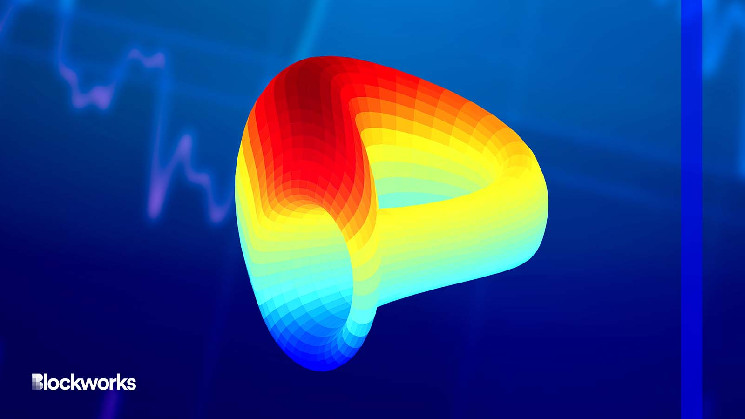Curve Finance has deployed the smart contract for its stablecoin crvUSD on Ethereum.
The project designed the stablecoin using the Lending-Liquidating Automated Market Maker Algorithm (LLAMMA), which is a combination of both a traditional AMM and a lending market.
According to a white paper from last October, LLAMMA uses an external oracle that ensures that crvUSD pools are made up of two different assets: crvUSD and the asset used to mint the stablecoin (such as ETH or BTC). This differs from other AMM designs, where assets are swapped at the price determined by the AMM curve.
When the price of the collateral is higher, all of the user’s deposits will be in the deposited collateral, but as the price of the collateral goes lower, the oracle will convert the deposits to crvUSD.
Curve deployed its initial crvUSD smart contracts yesterday, but a minor issue where fees were not flowing to the project’s DAO was noted by its team, Blockworks Research Senior Analyst Dan Smith said.
This protocol resolved this minor issue after Curve Finance redeployed an updated smart contract this morning.
Even though information on Etherscan shows that Curve minted an initial 20 million crvUSD, Smith notes that this was part of the deployment process and the tokens themselves did not leave the system.
“crvUSD only becomes circulating after it has been borrowed by an end user,” he said.
At the time of writing, Michael Egorov, the founder and CEO of Curve Finance, has the only open loan of $1.05 million.
The final step, Smith noted, will be to push the user interface onto the Curve website.
“With two major releases during the depths of the bear market (crvUSD and upgraded tri crypto contracts), Curve is well positioned for success when liquidity and volume returns,” Smith said.
“Curve now controls multiple parts of [the] DeFi stack with a DEX, lending market, and stablecoin.”
To learn more about Curve Finance and its Q1 performance, check out this detailed report by Blockworks Research.
 blockworks.co
blockworks.co
